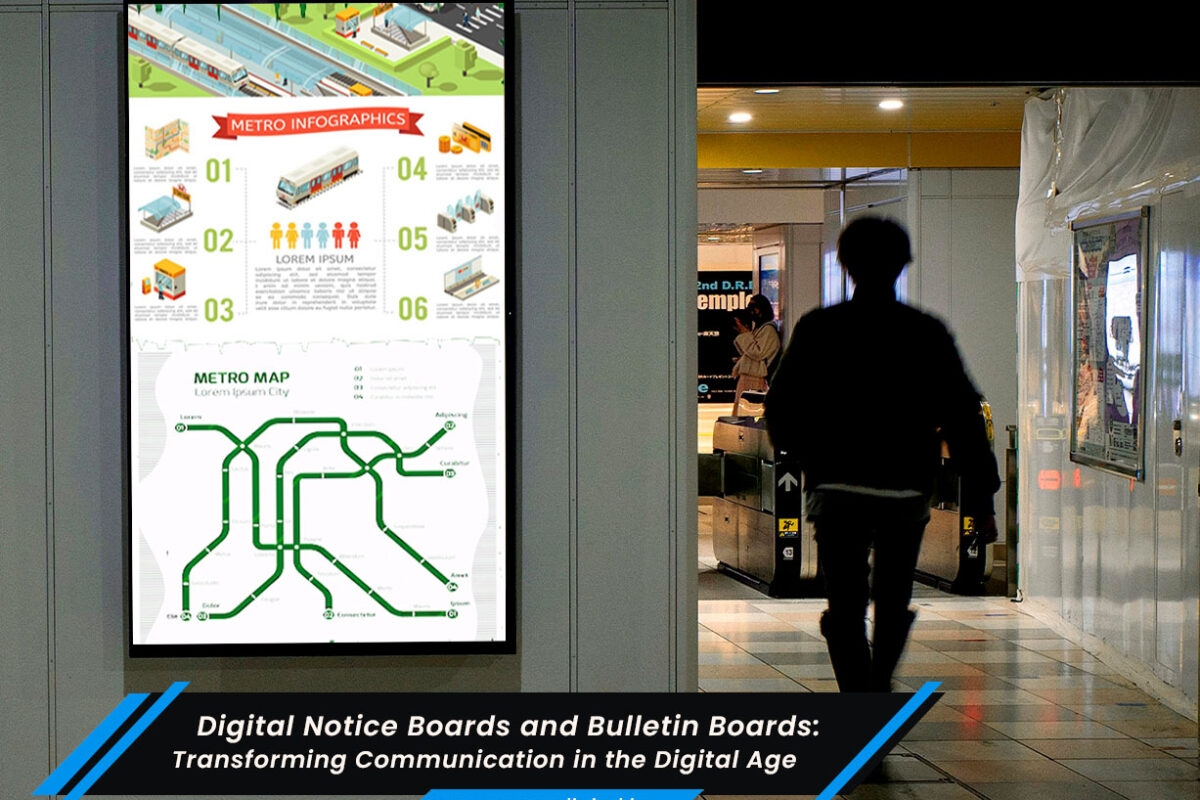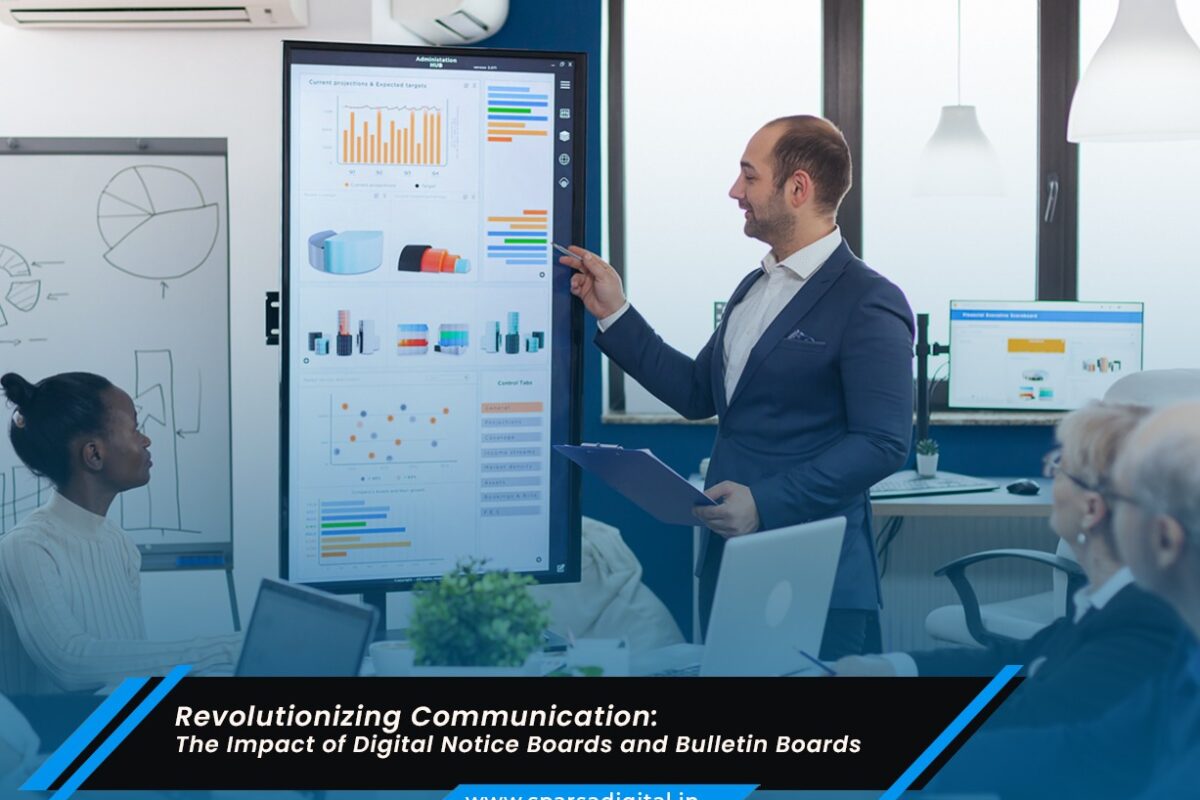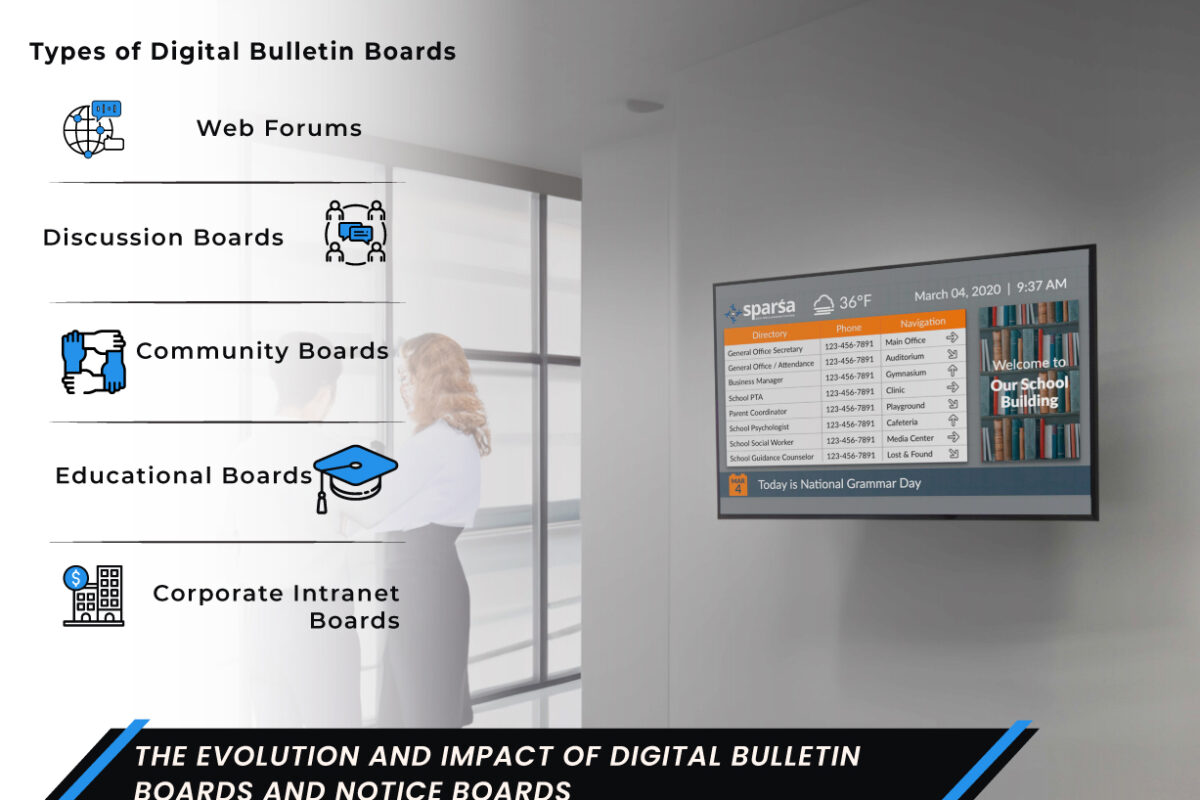In an era where information is dynamic and constantly evolving, traditional notice boards and bulletin boards are undergoing a digital revolution. The advent of Digital Notice Boards and Digital Bulletin Boards is reshaping the way organizations, educational institutions, and public spaces communicate with their audiences. This blog post explores the usage, benefits, and potential impact of these digital communication platforms, delving into their applications across diverse sectors and their role in fostering effective and engaging communication.
Evolution from Traditional to Digital Communication Platforms:
The Role of Notice Boards and Bulletin Boards:
Traditional notice boards and bulletin boards have long been essential fixtures in various settings. Whether in schools, offices, community centers, or public spaces, these boards served as static platforms for posting announcements, event details, and important information.
Challenges of Traditional Boards:
While traditional boards served their purpose, they faced limitations in terms of real-time updates, space constraints, and visual appeal. As information became more dynamic and the need for instant communication grew, the transition to digital platforms became inevitable.
Understanding Digital Notice Boards:
Introduction to Digital Notice Boards:
Digital Notice Boards are modern communication platforms that replace traditional boards with electronic displays. These digital displays can showcase a variety of content, including text, images, videos, and real-time updates, providing a more dynamic and engaging means of communication.
Dynamic Content Display:
Unlike static notice boards, Digital Notice Boards can display dynamic content that captures attention and keeps viewers engaged. This dynamic nature allows for the rotation of announcements, event schedules, emergency alerts, and other information without the need for manual intervention.
Real-Time Updates:
Digital Notice Boards enable real-time updates, ensuring that the displayed information is always current. This feature is particularly valuable in fast-paced environments where information changes frequently, such as corporate offices, educational institutions, and healthcare facilities.
Remote Content Management:
One of the key advantages of Digital Notice Boards is the ability to manage content remotely. Administrators can update, schedule, and organize content from a central location, eliminating the need for physical presence at each display location.
Understanding Digital Bulletin Boards:
Introduction to Digital Bulletin Boards:
Digital Bulletin Boards share similarities with Digital Notice Boards but are often broader in scope. While Digital Notice Boards primarily focus on announcements and information updates, Digital Bulletin Boards serve as versatile platforms for displaying various types of content, including news, weather updates, social media feeds, and interactive elements.
Multifunctional Display:
Digital Bulletin Boards offer multifunctional displays that go beyond traditional notice board functionalities. They can showcase a mix of announcements, news headlines, live feeds, and interactive widgets, creating a more immersive and information-rich experience.
Interactive Features:
Many Digital Bulletin Boards incorporate interactive features, allowing users to engage with the displayed content. Interactive elements may include touchscreens, QR code scanning, and real-time data feeds, enhancing user participation and creating a more personalized experience.
Customization and Flexibility:
Digital Bulletin Boards provide a high level of customization and flexibility. Administrators can tailor the content based on the audience, time of day, or specific events. This adaptability makes them suitable for a wide range of applications, from corporate lobbies to public transportation hubs.
Applications and Benefits of Digital Notice Boards and Bulletin Boards:
Corporate Environments:
- Employee Communications: Digital Notice Boards in corporate settings streamline internal communications by displaying company announcements, policy updates, and employee recognition.
- Meeting Room Information: In office environments, Digital Bulletin Boards can provide real-time information about meeting room availability, schedules, and upcoming events.
- Educational Institutions:
- Announcements and Events: Digital Notice Boards in schools and universities are effective for sharing announcements, event details, and important dates.
- Interactive Learning: Digital Bulletin Boards can be utilized for interactive learning experiences, displaying educational content, quizzes, and real-time updates.
- Healthcare Facilities:
- Patient Information: Digital Notice Boards in hospitals can display essential patient information, appointment schedules, and emergency alerts.
- Wayfinding and Facility Maps: Digital Bulletin Boards assist visitors in navigating healthcare facilities by providing interactive maps, department locations, and real-time wait times.
- Retail Spaces:
- Promotions and Product Information: Digital Notice Boards in retail environments are effective for showcasing promotions, product information, and advertising campaigns.
- Interactive Product Displays: Digital Bulletin Boards can enhance the shopping experience by providing interactive displays that allow customers to explore product features and details.
- Transportation Hubs:
- Real-Time Travel Information: Digital Notice Boards in transportation hubs display real-time information about departures, arrivals, and schedule changes.
- Interactive Wayfinding: Digital Bulletin Boards assist travelers with interactive wayfinding features, helping them navigate through complex transit spaces.
- Public Spaces:
- Community Announcements: Digital Notice Boards in community centers or public spaces can be used for sharing local announcements, events, and public service information.
- Weather and News Updates: Digital Bulletin Boards provide real-time weather updates, news headlines, and community-related content.
Overcoming Challenges and Considerations:
Cost Considerations:
The initial cost of implementing Digital Notice Boards and Bulletin Boards can be a consideration for some organizations. However, the long-term benefits, including reduced printing costs and increased communication efficiency, often justify the investment.
User Training and Adoption:
Introducing digital communication platforms may require user training to ensure that administrators can effectively manage content. Additionally, users need to become familiar with the interactive features and capabilities of Digital Bulletin Boards.
Cybersecurity Concerns:
As digital communication platforms become more interconnected, ensuring the cybersecurity of these systems becomes crucial. Protecting sensitive information and preventing unauthorized access is paramount in maintaining the integrity of digital displays.
Content Management Strategies:
Organizations need effective content management strategies to maximize the impact of Digital Notice Boards and Bulletin Boards. This includes creating engaging and relevant content, scheduling updates strategically, and ensuring a consistent flow of information.
Conclusion:
Digital Notice Boards and Digital Bulletin Boards are at the forefront of transforming communication strategies in various sectors. These dynamic and interactive platforms offer a myriad of benefits, including real-time updates, enhanced user engagement, and the flexibility to display diverse content. As technology continues to advance, the integration of artificial intelligence, augmented reality, and IoT promises to further elevate the capabilities of these digital communication tools.
The shift from traditional to digital communication platforms represents a paradigm change in how information is disseminated and consumed. Whether in educational institutions, corporate offices, healthcare facilities, or public spaces, Digital Notice Boards and Bulletin Boards are contributing to more efficient, engaging, and responsive communication. Embracing these technologies not only addresses the limitations of traditional boards but also opens new avenues for creativity, customization, and connectivity in the digital age.



